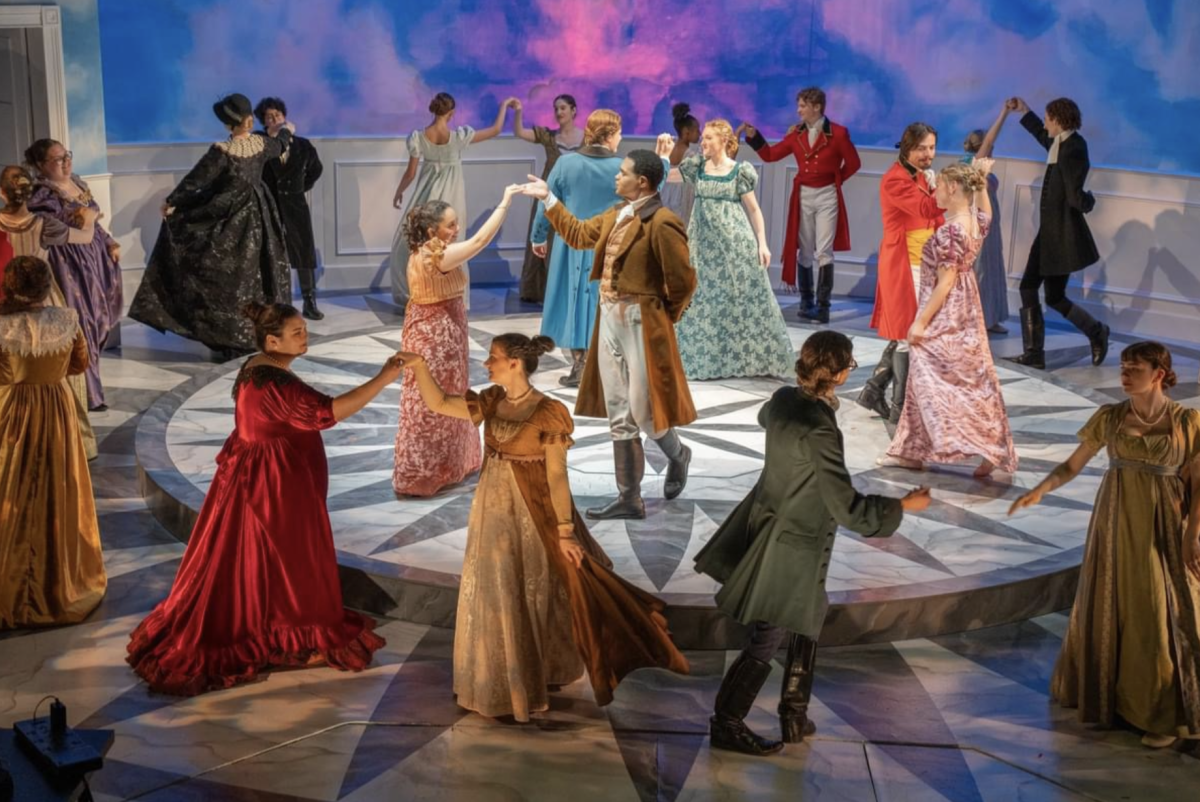Most people think of science and art as residing at opposite ends of the spectrum. But ask renowned geneticist/artist Hunter O’Reilly what she thinks of the two supposedly opposing media, and she has a completely different answer.
“Art presents another way of thinking about the beauty and the possibilities of science,” O’Reilly told the Detroit Free Press in September 2002.
O’Reilly, who teaches both art and genetics at the University of Wisconsin-Milwaukee, brings her work to Madison this week in “Radioactive Biohazard,” an exhibit that runs through mid-February in the Memorial Union’s Porter Butts Gallery.
Much of O’Reilly’s work, including several pieces in her Madison exhibit, focuses on the combination of the terrifying and the beautiful.
For example, in “The Art of Death: Virusus Are Beautiful,” O’Reilly enlarged microscopic images of influenza, herpes, ebola, HIV and rabies and engorged them with vibrant colors. Each image is cut out and raised from the wall, illuminated from the back with neon.
By combining the fearsome and deadly with the beautiful and alive, O’Reilly hopes to ” … show the prejudice people have about disease, let alone how people become stigmatized when they have a disease.”
In what is arguably one of the most powerful pieces in the exhibit, O’Reilly attempts to give credit where credit is due by pointing out the contributions scientist Rosalind Franklin made to the discovery of the structure of DNA.
Franklin, who worked with James Watson, Francis Crick and Maurice Wilkins on DNA research throughout the 1950s, was undoubtedly heavily involved in the group’s work, but due to her position as a female scientist, she was often not rewarded for her work.
Franklin died of cancer in 1958, and in 1962, Watson, Crick and Wilkins shared the Nobel Prize for Physiology and Medicine for their discovery of the DNA structure; Franklin was not recognized.
O’Reilly’s work “Rosalind Franklin and the Discovery of DNA Structure” pays homage to Franklin’s contributions by showcasing her image prominently in the middle of the piece, in bright red.
Surrounding her image are several X-ray photos of DNA that Franklin took, along with images of cells from a developing butterfly wing, a small photo of Maurice Wilkins and several images of chromosomes.
But perhaps the image that speaks most to the depth of the piece is the blue photo, placed in the middle of Franklin’s face, of Watson and Crick examining a model in an effort to discover the structure of DNA.
Dr. O’Reilly, who received her Ph.D. in genetics from UW-Madison in 2000, showcased several art exhibits in Madison from 1997 until 1999. She currently teaches biology and art at UW-Milwaukee, where she pioneered the course “Biology Through Art,” in which students have the opportunity to work in both science and art and to explore the common ground between the two media.
From O’Reilly’s Madison exhibit, visitors can expect to see a variety of media, ranging from oil paint on canvas to installations and sculpture. By using such a variety, it seems, O’Reilly further drives home the point that art is diverse and can be combined with what is generally thought of as its direct opposite — science — and still affect people.
In fact, many have found O’Reilly’s art controversial for its emphasis on the importance of scientific research, including human cloning.
“Popular ideas about human-genetics research have been shaped by science fiction, superficial news coverage and people’s fears about what would happen if the information was misused for political reasons,” she said in 2002.
O’Reilly’s work can generally be thought of as at least unique, if not groundbreaking. While she claims influences such as Kandinsky, Picasso and Matisse, all her art is clearly the result of her own experiences, work and passion. Her Madison exhibit has the potential to entertain and educate and open eyes.
Dr. Hunter O’Reilly’s exhibit, “Radioactive Biohazard,” opens at the Memorial Union’s Porter Butts Gallery (800 Langdon St., second floor) this Friday, Jan. 24, with a reception from 7-9 p.m. It runs through Feb. 22, with a talk by Dr. O’Reilly Feb. 15 at 2 p.m. The gallery is open Monday – Friday 10 a.m. – 8 p.m. It is free and open to the public.







